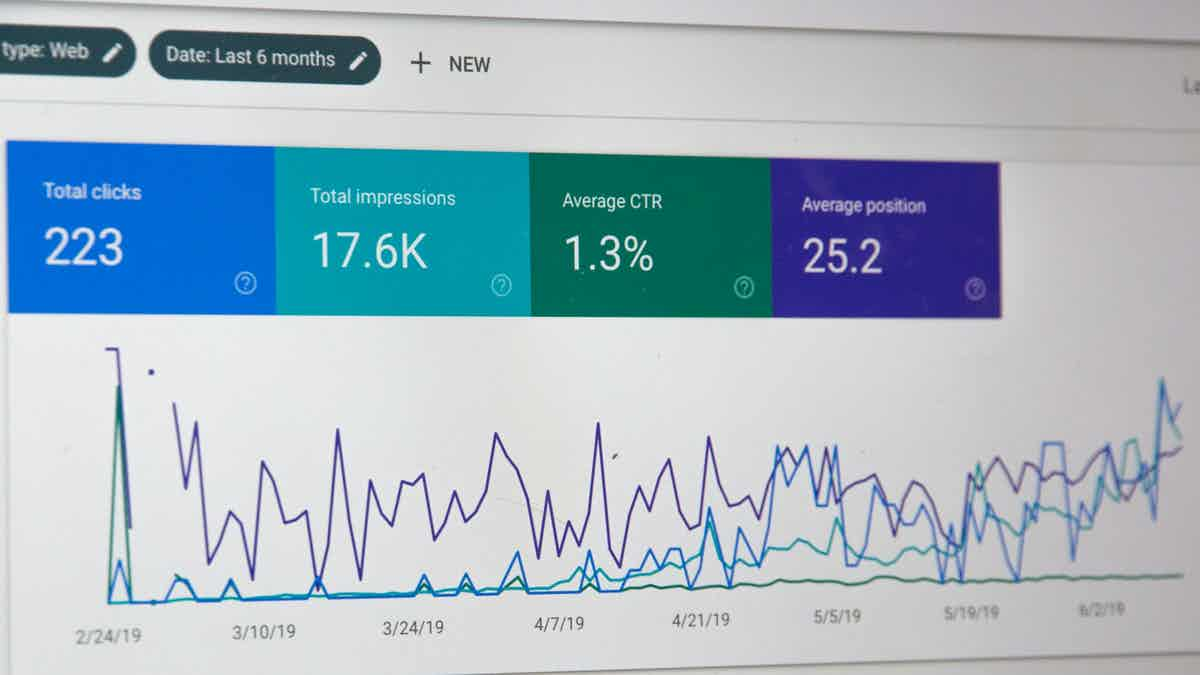
5 SEO Mistakes to Avoid for Your Online Course
Good SEO practices can build strength, but bad ones can undermine all your efforts. Here’s how to avoid some of the worst errors.
In our recent post on building SEO strength, we talked about the basic best practices you can follow to help grow organic traffic to your course website. However, as with almost any marketing strategy, there’s also many mistakes you can make along the way, either by following a bad strategy, or by being misled by bad advice.
Following a bad strategy with SEO can be particularly frustrating, as some practices can undermine your efforts and even lead to penalties from Google. Others may simply be ineffective, leading you to wonder why all the hard work you’re putting into your SEO isn’t showing any results.
Unfortunately, when SEO doesn’t seem to be working fast enough, some people panic and turn toward options that promise the immediate results they expected to see. These strategies may show an initial boost, but are ultimately self-defeating. So, without further ado, here are five SEO traps that you should avoid at all cost.
1. Keyword stuffing.
Keyword stuffing is the oldest mistake in the book, but that doesn’t stop some people from still following the practice. If you’ve ever landed on a web page that seems to use the exact same phrase dozens of times to the extent that you never want to read those words ever again, that would be an example of keyword stuffing.
Some people can fall into this practice through simple misunderstanding. They read that they should include their keyword of choice a few times on a page, and they interpret that to mean they need to cram it everywhere it fits, no matter how awkward. Others take this practice to an extreme, finding ways to stuff keywords where most users won’t even see them (like hidden in alt text, or as white text on a white background at the bottom of a page).
There are two problems with this. First, copy that is weighted down with too many keywords is bad to read. Imagine attracting a prospective learner to your site only to make a bad impression with copy that makes you look like a poorly-written spam email? You might get more traffic, but you’ll immediately turn that traffic away with your bad content.
Second, search engines flag keyword stuffing as a negative ranking factor. If they catch you at it, they’ll penalize your page by tanking it to the bottom of their search results, and that’s a black mark that doesn’t go away easily.
Furthermore, as search algorithms have grown more sophisticated, including an exact matching phrase in your content has become less important. It may even be more beneficial to include a variety of key phrases, not only for more natural copy, but for more keyword types.
2. Short or low-quality content.
If I had to guess, I would bet that most educators are better and writing good SEO content than otherwise. After all, you got into online education because you have expertise and a passion to share it with others. Passion and deep knowledge are a pretty reliable recipe for engaging content.
However, for some educators, their biggest hesitation is the fear that sharing too much of their content on their blog won’t leave anything left for their course. They start writing a blog post on an interesting subject, but just as they’re getting into the meet of the content they pull back and say “to learn more, take my course!”
The biggest problem with this mindset is that a high-quality course is more than a blog post could ever be. What you’re selling with your course isn’t just the information, it’s the effort you took to structure that information into clear, memorable lessons. It’s the quizzes you created and the time you will devote to grading assignments and providing personal feedback. And it’s the community of fellow learners that will grow around your learning content.
There are certainly some key ideas that you may want to save for your course, but this won’t be the majority of your content. In fact, taking a generous approach with your own knowledge will do more to win over new learners to your content. If you grow a dedicated following on your blog, pitching them your great course later will be a relatively easy sell.
But to gain followers and readers, your blog needs to have value. And if you’re only using it to churn out short teaser articles that do little more than include a keyword a bunch of times, you’ll not only fail to earn SEO rankings, you’ll also turn potential students away from your course.
3. Duplicate or cannibalistic content.
Another problem of short posts is that they can end up competing with each other for search engine rankings. For instance, if you run a cybersecurity compliance training course for businesses, and you what to rank for keywords related to phishing attacks so you write a post called “How to Spot a Phishing Attack.” A year goes by, and then you write a post called “How to Spot the Latest Phishing Attack.”
Because both these posts are short and have such similar titles, search engines don’t know which to rank higher. They may rank one higher in some instances, and the other higher in others, or one might end up getting all the traffic while the other gets none.
A more effective strategy is to write one long piece of anchor content about phishing attacks, which you keep updated with best practices. Then, as new stories emerge, you can write more in-depth pieces that are targeted toward more specific search phrases, which you then link back to the anchor post. This helps Google see that if someone searches for “phishing attacks,” they should be directed toward your biggest post, but if someone searches for “spear phishing attacks 2021,” they might get the post you wrote a week ago about the latest high-profile hack and your recommendations for keeping their business safe.
Obviously, duplicating content causes similar problems. If you’re trying to get your course pages to rank for SEO, make sure you’re not using the same copy cross multiple pages. If you have several courses that cover similar topics but for different levels of expertise, you would do better to make a longer, in-depth page talking about the importance of your course and describing how your course content is structured, the use that page to direct learners toward the specific course pages for their experience level.
4. Poor keyword targeting.
You could be doing everything right with your SEO in terms of writing excellent content that ranks well, but still fall short of your goals if you’re targeting the wrong terms. This can happen when an educator is overly-aggressive in trying to target keywords that are more relevant to their competitors. It’s natural, if you’re creating courses in a tight market, to want to attract learners away from a rival course creator. But it could be that your competitor’s learners aren’t a good fit for your course.
It could also be that the keywords are too broad, and are attracting people who aren’t a good fit. If you specialize in elearning packages for corporations but are only drawing in individual learners, you may want to change your strategy to focus more on business-oriented keywords. If you specialize in courses for children but are mostly attracting adult learners, you may want to write more about early education on your blog.
This isn’t to say that the other traffic is bad traffic, just that it’s not likely to be the best investment of your time. If you’re spending a lot of time writing content that attracts a thousand learners but only convinces three to sign up for your course, that’s less valuable than a post that attracts a hundred learners but convinces ten to sign up. So don’t be afraid to get more narrow and specific if it will attract more of your ideal learners.
5. Backlink spamming.
Finally, let’s talk about backlinks. Having a quality backlink does great things for SEO, but it’s also where some people can get into huge amounts of trouble if they go about it the wrong way. In general, earning backlinks is hard, and you mostly have to rely on others to link to you on the strength of your excellent course.
However there are a lot of backlink scams out there, and its possible for some well-intentioned educators to be mislead by SEO “experts” who promise to get them a certain number of backlinks, who then go about doing so by illicit means.
The two most common backlink scams involve spamming the comment sections on other websites with low quality posts that only exist for the backlink. These comments are often removed by the site owners, so they don’t usually do much good. This strategy can also earn a penalty from search engines if you’re caught at it.
Another scam is for these companies to “earn” you backlinks by placing your link across a number of low-quality domains that they own. These are sights no one actually visits, because they only exist to have backlinks to other sites. If your link starts appearing across these kinds of sites, it can also earn a penalty.
We recently were targeted with a new backlink scam that I hadn’t seen before. Someone claimed that a stock image we had purchased and used on one of our posts was copyrighted by their client. Rather than ask us to attribute the image to the artist, they told us we would have to link back to their website or else face the consequences.
Certainly a creative scam, but a scam nonetheless. It should go without saying that you shouldn’t try anything like this yourself. But if you decide to work with an SEO specialist to help improve your rankings, also take the time to learn from them what strategies they plan to take so that you can be sure they aren’t following any of these bad practices on your behalf.
There’s no magic trick to achieving perfect SEO results.
The analogy I always use for SEO is that it’s like exercise: it takes work, there are no shortcuts, and results don’t happen overnight. But with persistence, you’ll not only begin to see the effects of your efforts, but the gains you make will only become easier to sustain over time.
Creating high-quality content to market your online course has other benefits as well. You can repurpose this content in your courses, use it on social media, or send it out in your email newsletters. It can also establish your expertise and help you become a thought leader in your field.
But all that can only happen if you follow best practices with your SEO. If you try to take shortcuts, you’ll only set yourself back.

Karmen Kendrick
iamkarmenk






